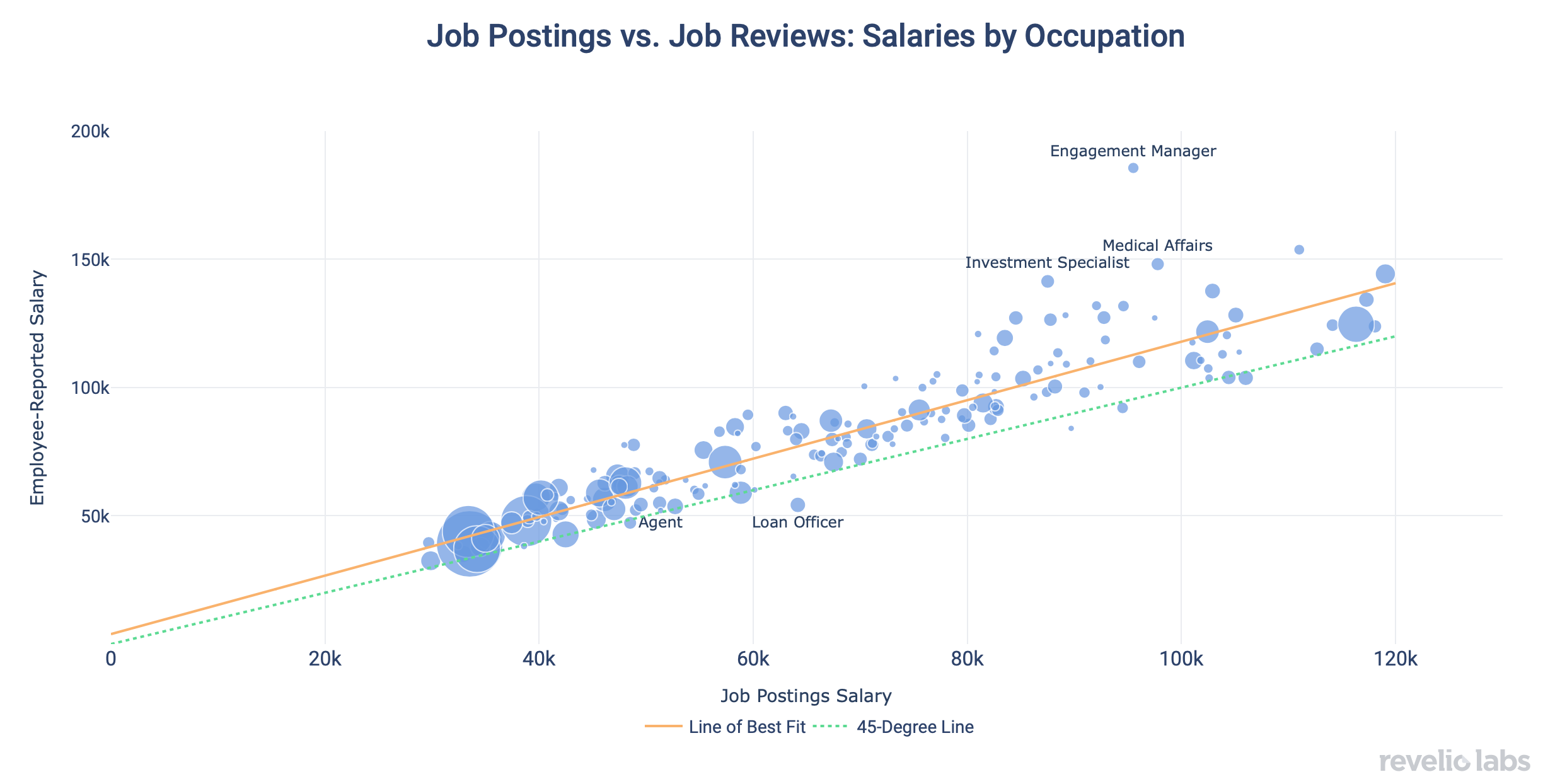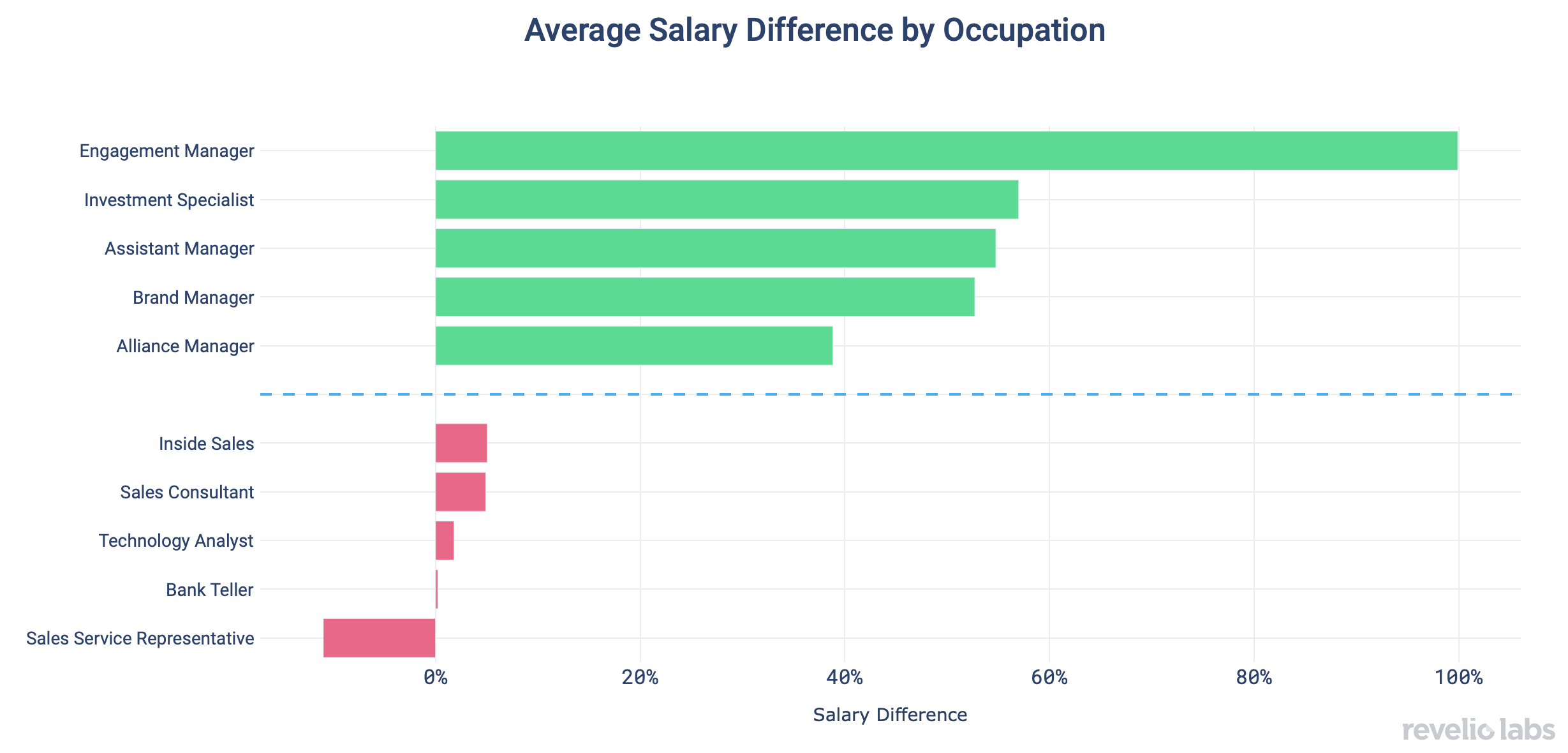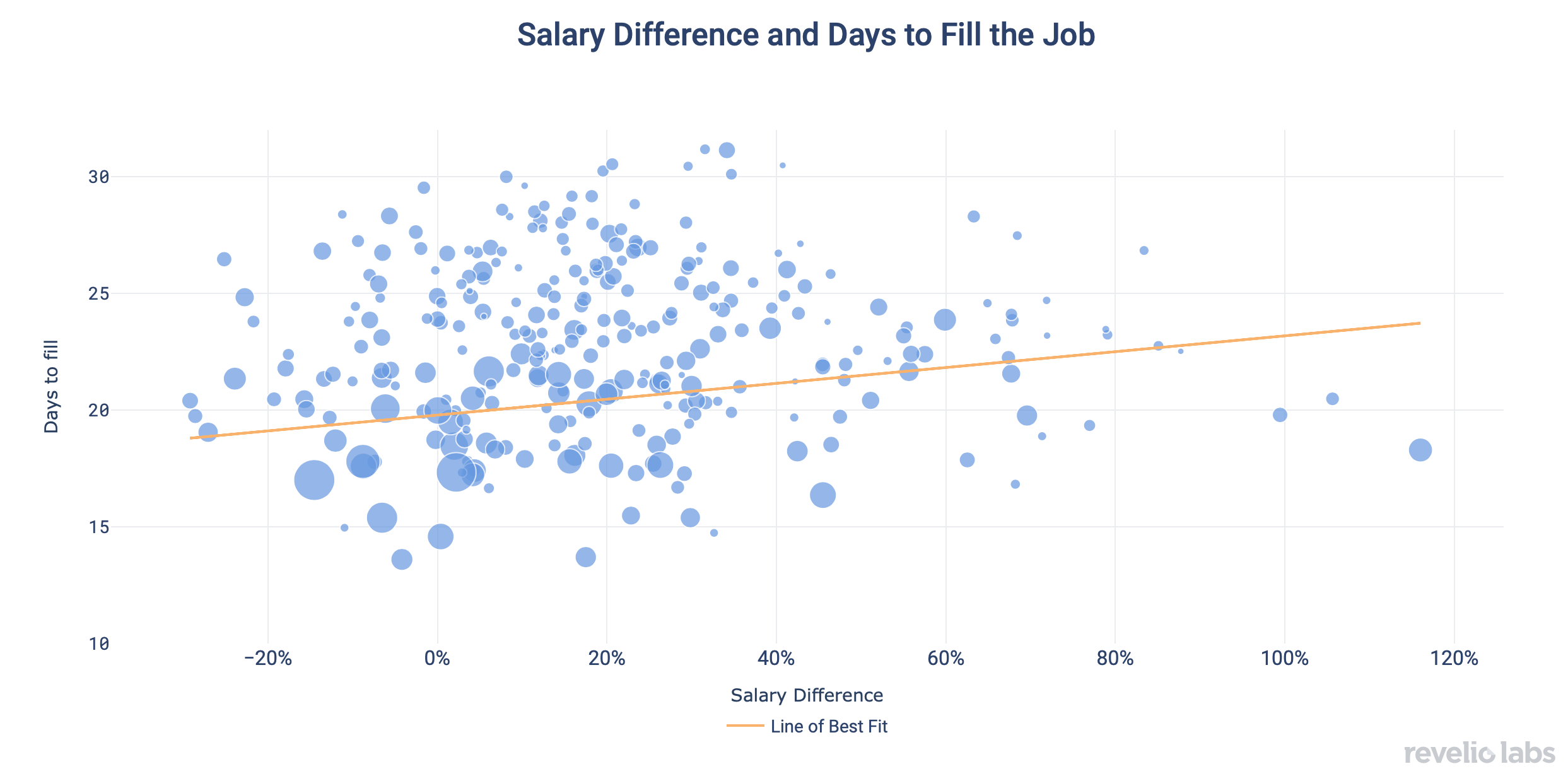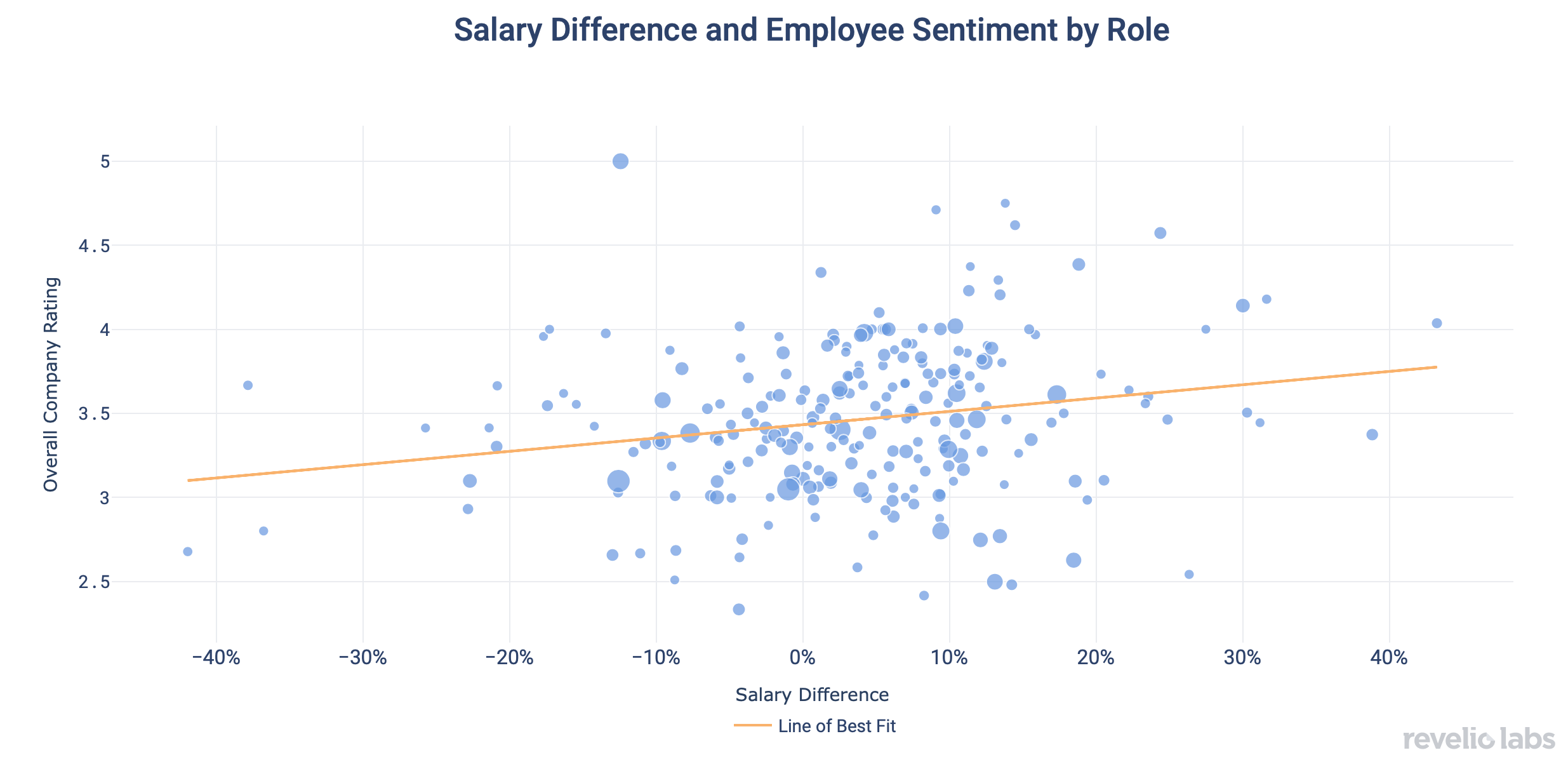How Much Negotiating Power Do You Have With Your Salary?
There is the common practice of negotiating a higher salary. But how much room do people really have when negotiating their salary?

When considering a job offer, applicants negotiate perks, work hours, start date, health or retirement benefits. Perhaps most importantly, there is the common practice of negotiating a higher salary. But how much room do people really have when negotiating their salary? Can they get 5% above the offer? Or even 50% more?
To explore this question, Revelio Labs examines the differences between offered salaries (proxied by the salaries announced on job postings) and the actual salaries that employees receive (salaries that employees report on job review websites during or after employment). The figure below leverages our HR database systems to show offered versus actual salaries for different occupations, where the size of each circle corresponds to the number of job postings for that role.


Most notably, employees in most occupations report getting salaries that are higher than those in job postings, regardless of the demand for the occupation. However, the negotiation power of employees is higher for high-paying occupations, particularly those in IT. This power can come into play at various points during a person’s employment term, from initial salary negotiations to occasional pay raise discussions.
By zooming in on the roles that have the highest difference between advertised and reported salaries, we see that many management roles are able to negotiate higher-than-announced salaries, while sales roles get salaries closest to those advertised in postings.


Sign up for our newsletter
Our weekly data driven newsletter provides in-depth analysis of workforce trends and news, delivered straight to your inbox!
How do gaps between salaries in job postings and actual salaries affect companies? We find that companies with large salary gaps tend to take longer to fill openings. One component of this extended time-to-fill might be longer negotiation time for companies that are open to offering salaries above the advertised rates.


Companies that spend the extra time to negotiate salaries with their employees may stand to benefit. Those that pay higher-than-advertised salaries tend to have happier employees, our HR database systems show.


Key takeaways:
- The gap between advertised and reported salaries increases for high-paying occupations and is highest in managerial occupations, Revelio Labs finds.
- Companies that have larger salary gaps have a more difficult time filling positions.
- In fact, companies that pay salaries higher than they advertise tend to be more liked by the employees they hire.

